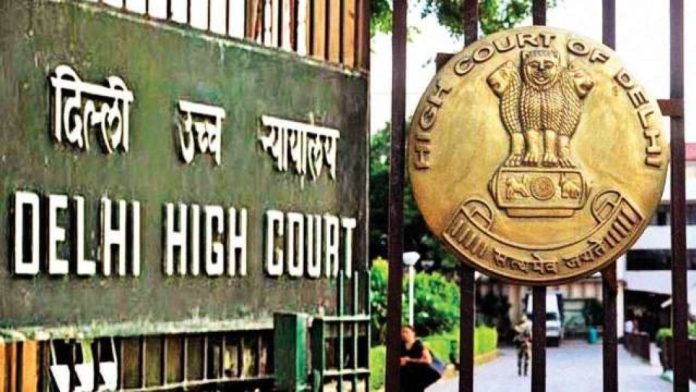The Delhi High Court has granted bail to a man who was charged with offences under Sections 38 and 39 of the Unlawful Activities (Prevention) Act, noting that mere possession of photographs of Osama bin Laden, ISIS flags, or accessing the lectures of hardline Muslim preachers, could not be considered a crime under UAPA.
The Division Bench of Justice Suresh Kumar Kait and Justice Manoj Jain recently noted that such images, videos, or photographs could, at best, give a glimpse into what was going in the mind of that person.
However, talking about a penal provision, which in essence took away the liberty of anyone and where even the grant of bail became a sort of exception, the prosecution needed to have some extra ammunition in the shape of decipherable and tangible material.
The High Court observed that merely because the mobile device of the appellant was found carrying incriminating material, coupled with the fact that he was accessing lectures of hardliner/Muslim preachers, would not be enough to brand him as a member of such terrorist organization, much less acting in furtherance of its cause.
It noted that in today’s electronic era, when such incriminating material was freely available on the internet, any curious mind could access and even download such content.
The High Court said there was nothing to suggest that after downloading the material, accused Ammar Abdul Rahiman had, in any manner, disseminated such information to anyone or had put any such information on his social media account or in the public domain.
In such a situation, it would be very difficult at this stage to come to a conclusion that the appellant had associated himself with a terrorist organization or that he was professing to be associated with such a terrorist organisation.
The Bench noted that it was also unable to find any material which may indicate that the accused was giving support to any terrorist organisation.
The Bench made the observations while granting bail to Rahiman, who was charged under Sections 38 and 39 of UAPA and relevant Sections of the Indian Penal Code (IPC).
The allegation against Rahiman was that he communicated with other radicals and planned to take Hijra to ISIS-controlled territory to join ISIS.
The National Investigation Agency (NIA) alleged that Rahiman associated himself with ISIS and incriminating contents like videos and images related to ISIS were recovered from his digital devices and social media account.
It was the agency’s case that these materials reflected his inclination towards violent Jihad and established that he was a member of the proscribed terrorist organization ISIS and hatched a conspiracy to support the terror group.
The Bench noted that the invocation of Sections 38 and 39 of UAPA against Rahiman was ‘erroneous and misplaced’.
It said at best, Rahiman could be said to be a highly radicalised person who believed in the ideology of ISIS, a banned terrorist organisation, but such fascination cannot be dubbed as his being associated with the terror outfit and furthering its cause.
The Bench said that merely because Rahiman was following some news items related to the Middle-East and the Israel-Palestine conflict or had been accessing hate speeches of hardline Muslim preachers, would not be enough to hold that he was acting in furtherance of a banned terrorist organisation.
The Bench, in its detailed judgement, also distinguished between an offence under Section 10 of the UAPA and Sections 38 and 39 of the Act.
While Section 38 dealt with offence relating to the membership of a terrorist organisation, Section 39 was about offence relating to support given to a terrorist organisation.
Section 10 imposed penalty for being a member of an unlawful association. This provision made mere association with the banned group liable for punishment.
The Bench noted that for an offence under Sections 38 and 39, there was a prerequisite of mens rea. This prerequisite was in direct contrast to Section 10 which stipulated that if an association was declared unlawful, a person who was a member of such an association, would be liable for punishment.
While Section 10 penalised mere membership or association with any unlawful association, Section 38 and Section 39 made such an association penal only when the association or support, as the case may be, was done in furtherance of the activities of such a terrorist organisation.
However, in view of specific language of Sections 38 and 39 of UAPA, the aspect related to the intention was required to be established, even for making out a prima facie case. There was no room for guesswork, it added.
The Bench noted that the statutory bar contained in Section 43D(5) of the UAPA would also not come into play because the accused has not been charged with an offence under Chapter IV of the UAPA and the bar applied only to offences under Chapters IV and VI.
The accused was represented by Senior Advocate Nitya Ramakrishnan, along with Advocates Archit Krishna, Tamanna Pankaj and Stuti Rai.
Additional Solicitor General (ASG) Aishwarya Bhati, along with Public Prosecutor Zeenat Malick, Special Public Prosecutor Akshai Malik, and Advocates Rustam, Akshay Sehgal, Khawar Saleem, Arun Kumar & Poornima, appeared for NIA.


